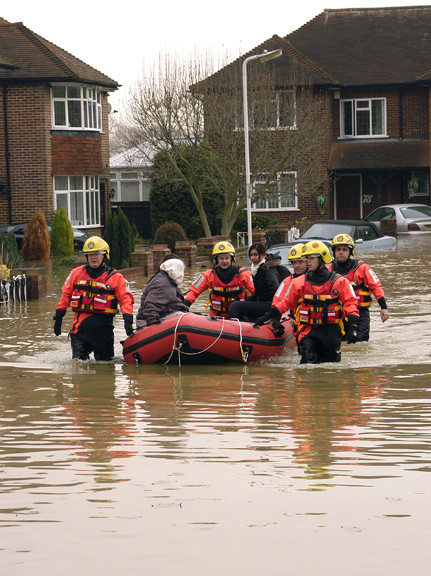Flash Floods: Understanding The Dangers And How To Stay Safe

Table of Contents
Understanding the Dangers of Flash Floods
Flash floods differ significantly from regular floods. While regular floods develop slowly, allowing for more time to prepare, flash floods are characterized by a rapid and unexpected rise in water levels. This sudden onset is what makes them so incredibly dangerous.
The Speed and Force of Flash Flood Waters
The speed and force of flash floodwaters are terrifying. Imagine a wall of water surging through your neighborhood, carrying debris with destructive power.
- Debris: Flash floods carry a range of dangerous debris, including cars, trees, building materials, and even large rocks. This debris can cause significant damage to property and inflict serious injuries or fatalities.
- Erosive Power: The sheer force of the water can erode foundations, undermine structures, and cause catastrophic damage to buildings and infrastructure. Homes and businesses can be swept away completely.
- Risk of Being Swept Away: The powerful currents can easily sweep away people and vehicles, making swift escape extremely difficult. Even seemingly shallow water can be deceptively dangerous. The power of flash floodwaters is not to be underestimated.
Common Causes of Flash Floods
Several factors contribute to the formation of flash floods. Understanding these causes can help you identify high-risk areas and improve your preparedness.
- Intense Rainfall: Prolonged or intense periods of rainfall, particularly in areas with poor drainage, can quickly overwhelm natural and artificial drainage systems, leading to rapid water accumulation and flash flooding.
- Dam or Levee Failures: The failure of dams or levees can release massive volumes of water unexpectedly, causing catastrophic flash floods downstream.
- Sudden Snowmelt: Rapid melting of snowpack, especially during periods of warm weather or heavy rainfall, can dramatically increase water levels in rivers and streams, triggering flash floods.
- Wildfires: Wildfires can leave the ground scorched and unable to absorb water efficiently. This leads to increased surface runoff, making the area significantly more vulnerable to flash flooding after rainfall.
- Overflowing Rivers or Streams: When rivers and streams overflow their banks due to heavy rainfall or other causes, the resulting floodwaters can rapidly inundate surrounding areas.
Identifying High-Risk Areas
Certain geographical features make some areas more prone to flash floods than others.
- Mountainous Regions: Steep slopes in mountainous areas accelerate water runoff, increasing the risk of flash floods.
- Areas with Steep Slopes: Similarly, areas with steep slopes channel water rapidly towards lower-lying areas.
- Dry Riverbeds: Dry riverbeds or washes can quickly fill with water during intense rainfall, creating dangerous flash floods.
- Areas with Poor Drainage: Areas with inadequate drainage systems are more susceptible to water accumulation and subsequent flash flooding.
- Areas with a History of Flash Floods: Locations with a documented history of flash floods are statistically more likely to experience them again.
It's crucial to check local flood maps and risk assessments provided by your local government or emergency management agencies to determine if your area is at high risk.
Safety Measures and Preparedness
Being prepared is paramount when it comes to flash floods. Proactive measures significantly increase your chances of survival.
Creating a Family Emergency Plan
Developing a comprehensive family emergency plan is crucial. This plan should include:
- Evacuation Routes: Identify multiple safe evacuation routes from your home and workplace, considering potential road closures.
- Meeting Place: Designate a readily accessible meeting place outside your home, in case family members are separated during a flash flood.
- Communication Protocols: Establish clear communication protocols, including emergency contact numbers and a designated communication method (e.g., text messaging).
- Emergency Kit: Prepare an emergency kit that includes essential supplies like water, non-perishable food, first-aid supplies, flashlights, batteries, and medications.
Recognizing Warning Signs
Recognizing the warning signs of an impending flash flood can give you precious time to take action. Be aware of:
- Heavy Rain: Prolonged or intense rainfall is a major indicator of potential flash flooding.
- Rapid Water Rise in Streams or Rivers: A sudden and significant increase in water levels in nearby streams or rivers signals an immediate danger.
- Unusual Water Sounds: Unusual roaring or gurgling sounds from normally quiet streams or rivers can indicate rising water levels.
- Unusual Cloud Formations: Specific cloud formations can sometimes indicate the potential for heavy rainfall.
- Official Warnings from Weather Services: Pay close attention to weather forecasts and warnings issued by official sources, such as the National Weather Service.
Action to Take During a Flash Flood
During a flash flood, your priority is to ensure your safety. Remember:
- Move to Higher Ground Immediately: If you are in a low-lying area or near a rapidly rising body of water, evacuate immediately to higher ground.
- Avoid Driving Through Flooded Areas: Never attempt to drive through flooded areas, as even seemingly shallow water can be deep enough to sweep your vehicle away. Turn around, don't drown.
- Stay Away from Floodwaters: Avoid contact with floodwaters, as they can be contaminated with sewage, chemicals, and other harmful substances.
- Heed Official Instructions: Follow instructions from emergency services and local authorities.
Conclusion
Flash floods are a serious threat, characterized by their speed, unpredictable nature, and devastating power. The speed of the rising water and the force of the current leave little time for reaction, making preparedness absolutely critical. By understanding the dangers, identifying high-risk areas, creating a family emergency plan, and recognizing warning signs, you can significantly improve your chances of surviving a flash flood. Don't be caught off guard by the destructive power of flash floods. Develop a comprehensive emergency plan today and familiarize yourself with the warning signs to ensure your safety. Learn more about flash flood preparedness in your area and take the necessary steps to protect yourself and your loved ones.

Featured Posts
-
 Mercedes Must Re Sign George Russell One Major Exception
May 25, 2025
Mercedes Must Re Sign George Russell One Major Exception
May 25, 2025 -
 Pedestrian Hit By Vehicle On Princess Road Live Emergency Response
May 25, 2025
Pedestrian Hit By Vehicle On Princess Road Live Emergency Response
May 25, 2025 -
 The Black Lives Matter Plaza From Renaming To Removal
May 25, 2025
The Black Lives Matter Plaza From Renaming To Removal
May 25, 2025 -
 130 Years After Dreyfus Affair French Parliament Considers Posthumous Promotion
May 25, 2025
130 Years After Dreyfus Affair French Parliament Considers Posthumous Promotion
May 25, 2025 -
 2025 Met Gala Naomi Campbells Absence Sparks Wintour Feud Speculation
May 25, 2025
2025 Met Gala Naomi Campbells Absence Sparks Wintour Feud Speculation
May 25, 2025
Latest Posts
-
 Alex Ealas Paris Grand Slam Expectations And Preparations
May 25, 2025
Alex Ealas Paris Grand Slam Expectations And Preparations
May 25, 2025 -
 Grand Slam Debut Alex Eala Set For Paris
May 25, 2025
Grand Slam Debut Alex Eala Set For Paris
May 25, 2025 -
 Ealas Paris Grand Slam Debut A Look Ahead
May 25, 2025
Ealas Paris Grand Slam Debut A Look Ahead
May 25, 2025 -
 Eala Ready For Paris Grand Slam Debut
May 25, 2025
Eala Ready For Paris Grand Slam Debut
May 25, 2025 -
 2025 Met Gala Naomi Campbells Absence Sparks Wintour Feud Speculation
May 25, 2025
2025 Met Gala Naomi Campbells Absence Sparks Wintour Feud Speculation
May 25, 2025
